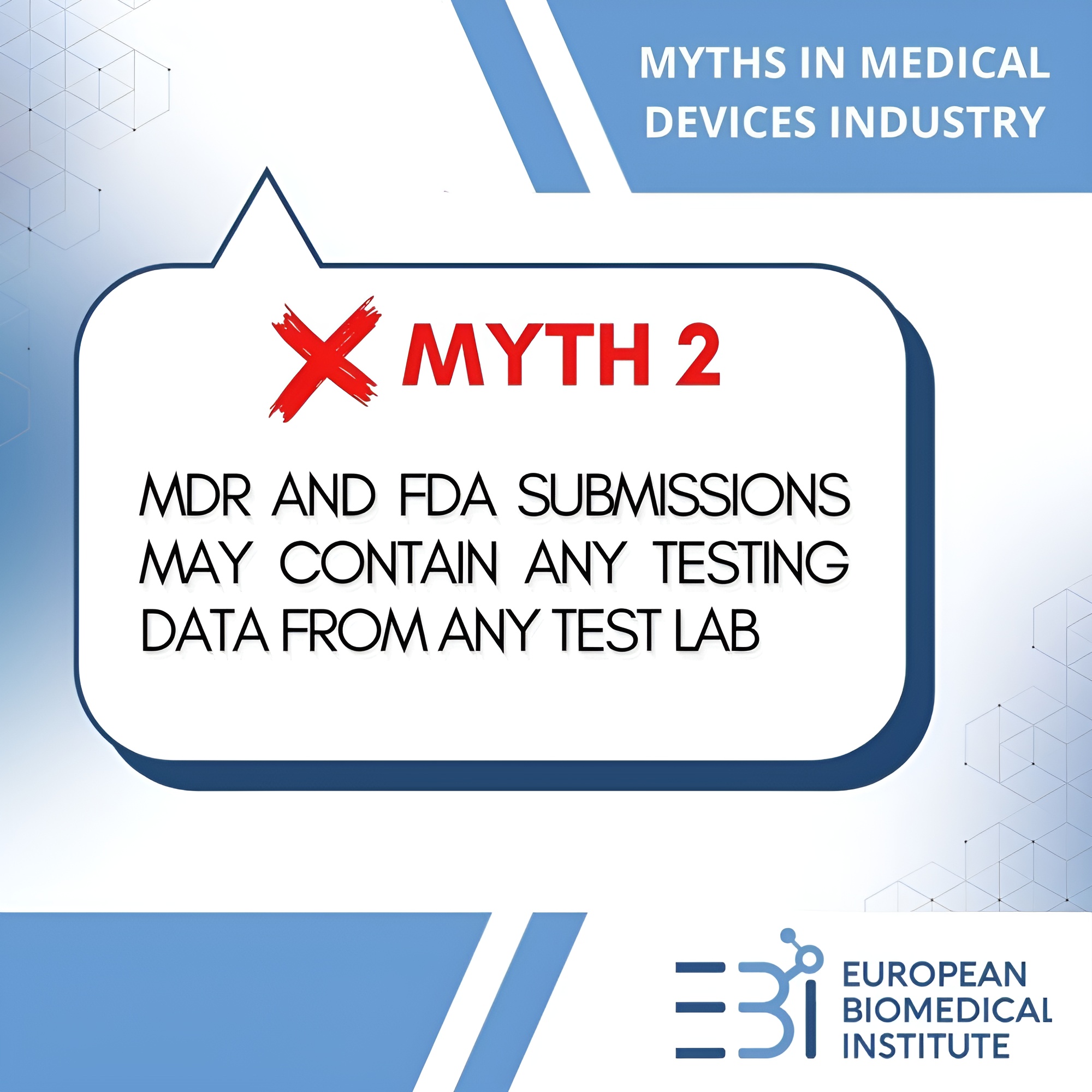Myths about the medical devices testing – Myth 2
As a company that specializes in medical device testing, we often encounter some common misconceptions and myths about the regulatory requirements and processes for obtaining medical device certificates from the European Union’s Medical Device Regulation (MDR) and the U.S. Food and Drug Administration (FDA). In this series of posts, we will debunk some of these myths and provide some facts and tips to help you navigate the complex and dynamic regulatory landscape.
MYTH #2.
For MDR and FDA any testing data from any third-party test lab is acceptable.
 FACT:
FACT:
MDR and FDA submissions have strict criteria and expectations for the quality, reliability, and validity of the testing data submitted by manufacturers. In recent years, the FDA has observed an alarming increase in submissions containing fraudulent, unreliable, or duplicated data generated by third-party test labs, especially from some facilities based in China and India. These submissions have resulted in the rejection of marketing authorization and the questioning of the data integrity of the entire file.
FDA requires manufacturers to carefully evaluate the third-party test labs they engage to conduct performance testing and to independently verify all testing results before submitting. Manufacturers are responsible for qualifying third-party test labs and ensuring that all information submitted to the regulators is truthful and accurate. The same applies to MDR. The above is very important in the light of following:
– In chapter B.4.5.2 of the latest ISO 10993-1, you can see the importance of ISO 17025 accreditation and GLP certification
– the latest FDA letter.
TIP:
To avoid data integrity issues and regulatory delays, manufacturers should partner with third-party test labs that have been accredited, certified, or recognized by reputable organizations. The must-have is ISO 17025 accreditation and GLP (Good Laboratory Practice) certification.